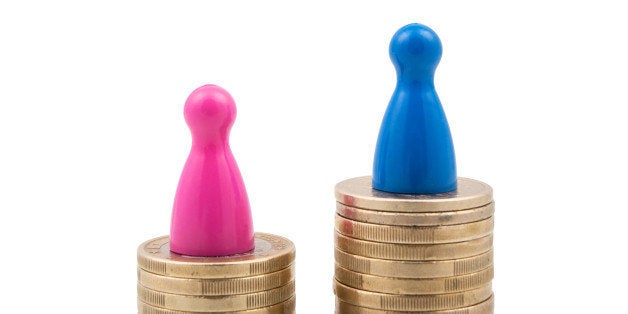
In a presidential election year, the economy is always a focus. In this election year in particular, not just the overall state of the economy, but the gender pay gap has been a focus of debates and conversation. Now, the Economic Policy Institute has released a new report focusing on the prospects of the college graduating class of 2016. The prospects, overall, appear dim, especially for young women and 8.1% minorities.
It's important to note that while the figure that most often gets headlines is that a woman makes 78 cents to a man's dollar, that number falls lower when economists factor in race, especially when one looks at women of color. In fact, the EPI report notes that the current rate of unemployment for recent college graduates who are also Black sits at 9.4%, which is higher than the peak unemployment rate for white men during the recession (9.0%). Transgender people of color and disabled people of all races are generally considered to have the widest wage gaps and discrepancies in unemployment rates.
While wages have increased for young men graduating college by about 8.1% since 2000, wages for young women have fallen 6.8% in the same time period. The discrepancy, according to the EPI's report, is likely driven by men at the very top of the wage gap distribution earning more than ever.
What does this report mean for employers?
Ninety-three percent of Americans believe that all people should be paid equally for equal work, and yet there has been no substantial change in the pay gap in the last decade. It follows, therefore, that employers are probably not deliberately paying female employees 20% less than their colleagues (with increasing disparity across intersections of gender, race, and gender identity), and that employers will need to deliberately work to improve pay equality.
The report from EPI offers several specific policy recommendations for employers who want to improve pay distribution, including making it easier for workers to organize and collectively-bargain, raising the minimum wage, and providing a legal path to citizenship for undocumented workers, allowing them (and those in their industries) to command higher wages for their work.
But most of these changes will need to happen at higher levels of government than the traditional business can affect. What changes can a business make today to help support gender and race based pay equality?
Support fair scheduling practices
Low wage work often includes jobs in retail and service sectors, and positions most often held by women, specifically women of color. These workers are often held to rigid schedules that require them to work nights and weekends or ask for relocation assistance, but the unpredictability of scheduling can make it difficult to arrange child care or take care of a sick child or relative.
Employers can help by supporting sick pay, leave time, and fair maternity leave practices. Working with employees to create schedules that meet business needs but also remain consistent so that child-care can be arranged is beneficial.
Combat racially and gender biased hiring practices
Most employers are, of course, aware that it is illegal to refuse to hire someone because of their race or gender, but they may not have worked to combat their own internal biases. They might be less likely to consider the application of someone with a traditionally Latino surname, for example, but simply think that they're finding better qualified applications amongst the Joneses and Smiths. This is only the start of the process and I personally think that this is a sign of a bad workplace environment. Assigning ID numbers to applications in HR software can help to combat this bias, making sure that qualified applicants can get to interviews when they are deserved.
Fight the myth that the gap is due to education or experience differences
When the pay gap comes under conversation, many people assume that the pay gap exists primarily because women and people of color funnel into lower-paid careers or have lower levels of education. Repeated studies, however, have demonstrated that women get paid 91% of what men do for the exact same work.
Support zero-tolerance policies regarding gender discrimination and harassment
It's all well and good to suggest that a company actively recruit employees of all races and genders, but what will they find as an employee culture when they enter the workplace? Do they feel pressured to work 80 hours a week, or is there a healthy balance between work and life? Are there employees whose out-of-date attitudes are tolerated due to their age or importance, but who are chasing away the best employees?
Workplace culture is a huge factor in whether employees decide to stay with a company for the long term or look for other work. It benefits companies at every level to ensure that their culture is positive, productive, and anti-discriminatory.
Despite surpassing men in college enrollment and graduation rates, women continue to experience significantly lower pay than men over their careers, and specifically upon graduation. What do you think employers can do to combat this discrepancy?
